Monday, 5:00pm
9 October 2023
FEED’s big vision
Festival Eastern European Design
2-4 September 2023, Warsaw, PolandA conference in Warsaw devoted to Eastern European design launched a conversation about stories yet untold. By Gabriela Matuszyk

In 2011 a fellow designer asked me ‘what the hell happened to Polish graphic design?’, writes Gabriela Matuszyk. He was referring to the decline of the ‘Polish Poster School’ (see Eye 4 and Eye 83) following the 1989 fall of the Berlin wall and the subsequent lack of representation of Poland’s graphic design on the international scene. I admitted that my knowledge of post-Soviet design from my home country was equally limited – a sentiment not uniquely mine.
On 2 September 2023 in Warsaw, a public conference dedicated to the visual culture of Eastern, Central and Southern Europe launched the first Festival Eastern European Design (FEED). Ten speakers from Bulgaria, Croatia, Czech Republic, Hungary, Moldova, Poland, Romania, Turkey and Ukraine presented each country’s respective graphic design history and contemporary scene, along with an account of the most pressing issues their design community is facing. Rene Wawrzkiewicz, the festival’s curator and organiser, was keen to launch a more open conversation among designers: ‘We all know what happens in London, Berlin, or Paris, but as someone who lives in Warsaw, I have next to no knowledge about what happens in the Czech Republic.’
Marko Golub presenting the history of Croatian design on stage with a sign-language interpreter. All presentations were in English.
Top. FEED organisers Agne Dautartaite Krutule, Oleg Gryshchenko, Anna Sarvira and Rene Wawrzkiewicz. Photos by Patryk Wiśniewski.
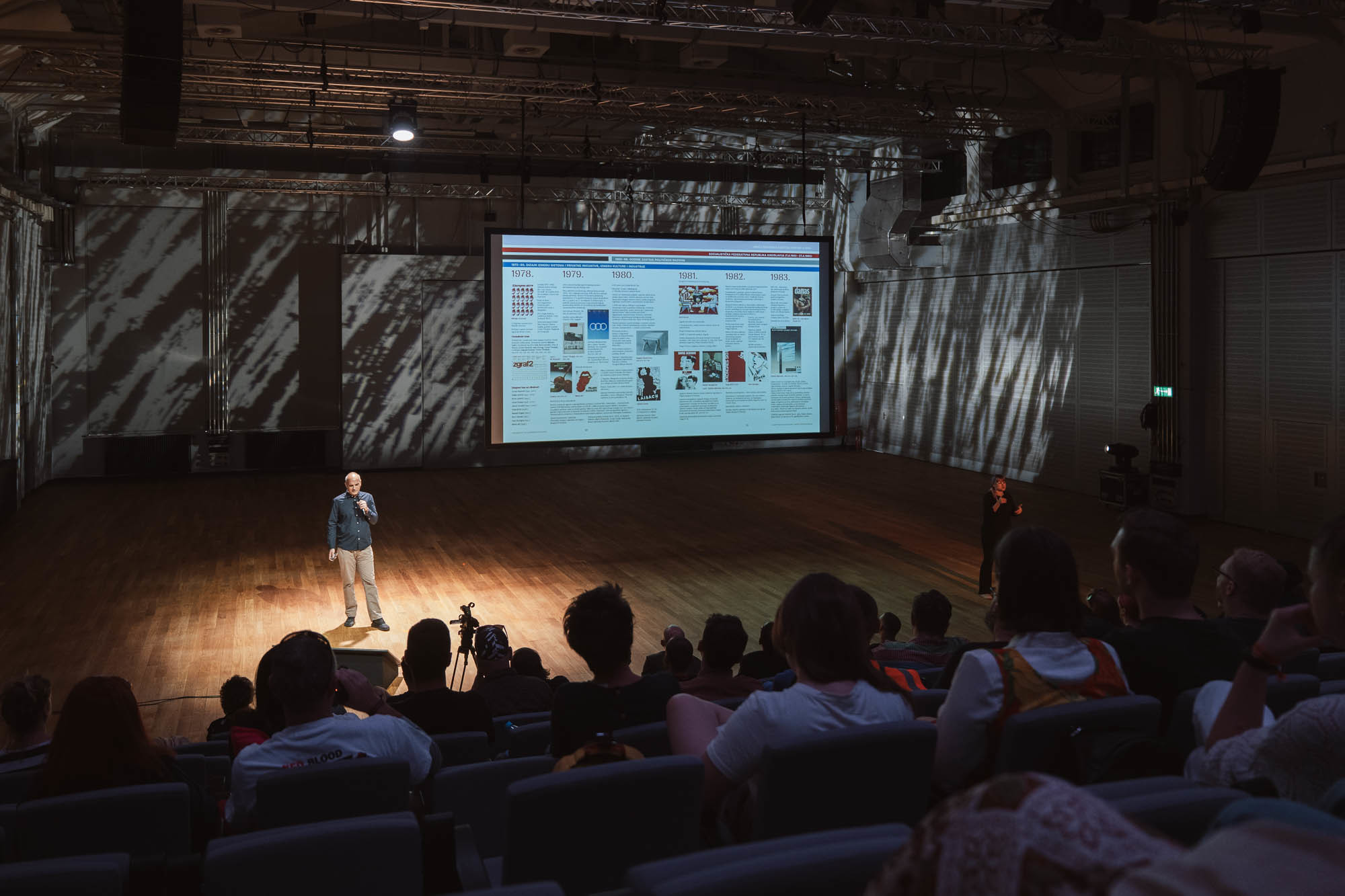
The conference provided a rare, wide-angle perspective into a large and culturally diverse region that went through dramatic transformations in recent history. A common thread among the presentations was the shift in visual communication after the ‘iron curtain’ was lifted. Polish designer and publisher Magdalena Heliasz described the creative chaos that followed, exemplified by eye-catching magazines ‘looking as western as possible’ and DIY vernacular typography. The culprits were designer-amateurs working with new technologies in a growing economy, free to produce whatever they wanted and subsequently polluting the visual landscape well into the 2000s. Similar stories came from Bulgaria, Romania, Czech Republic and Moldova.
Vernacular typography of the 1990s shown by Magdalena Heliasz. Photograph: U Adasia by Konrad Pustoła.
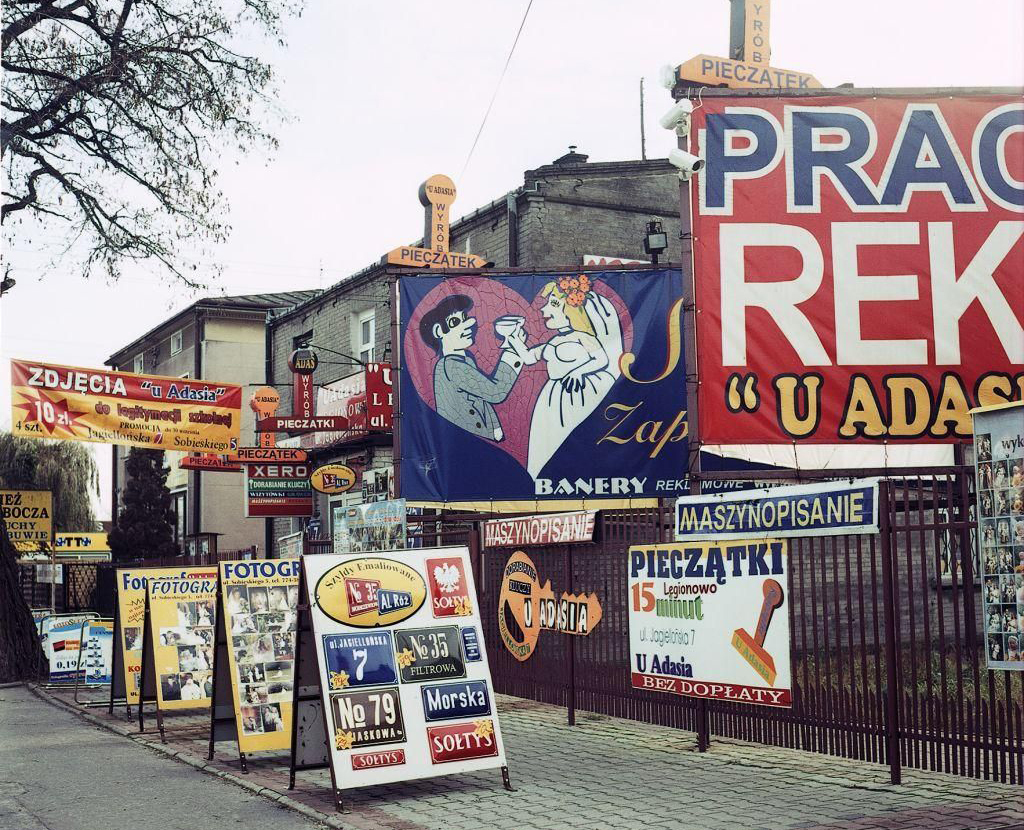
The visual identity eradicated by the Soviet Union’s censorship also meant that it took a while for Eastern Bloc countries to rediscover their design heritage. Many needed to undertake a thorough design ‘excavation’ to unveil stories and people hidden from history. In his presentation, Filip Blažek questioned whether the visual language of Czech Republic could even be called distinctly Czech, by listing numerous international influences that helped to shape it (such as Rondocubism, Modernism, Art Nouveau). He also recognised that the lack of access to new technologies and resources during the Cold War meant designers often needed to compromise on their typesetting or production methods. Adriana Andreeva and Boyana Giaourova acknowledged that design in Bulgaria feels monolithic, pointing out that municipal institutions do not use the work of graphic designers, which shows institutional stiffness and lack of awareness of the role graphic design can take. A more tongue-in-cheek take on design identity was presented by Moldovan designer and educator Dmitrii Vnucovch: ‘our visual culture is a mix of ottomans, soviets, agriculture, Jesus and Pinterest.’
In 2018, the Republic of Moldova launched its official national brand for international promotion. The visual system for the ‘Tree of Life’ was based on traditional carpet and embroidery patterns.
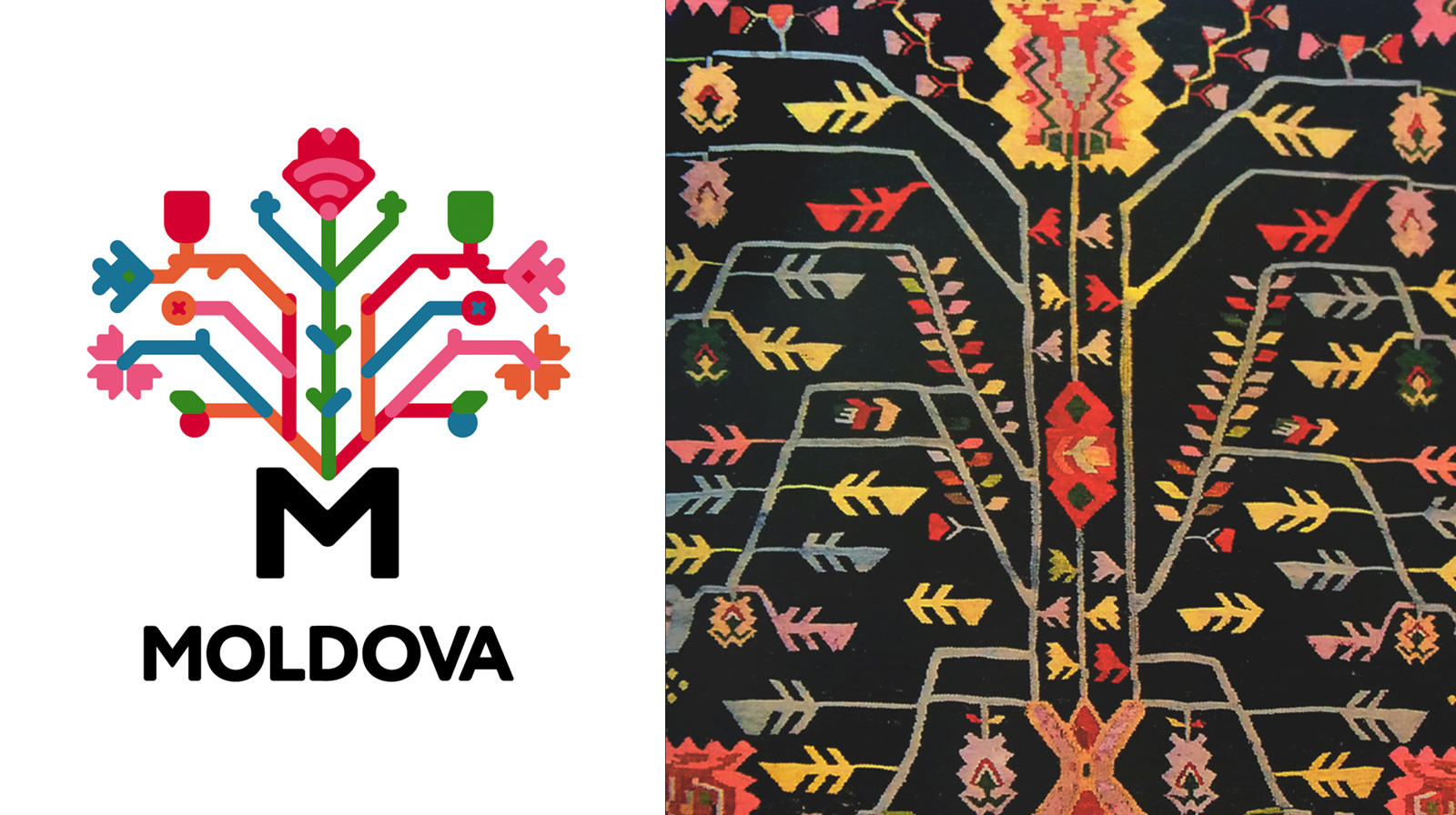
Curator and design critic Marko Golub spoke of Croatian design through different lenses, unveiling historical, technological and institutional contexts. When speaking about posters, Golub pointed out that all public spaces are political. What comes with it is an opportunity and responsibility graphic designers need to take seriously: ‘you colonise the street not only with your imagination, but you also colonise the visual communication’. Posters appeared in many of the talks, with a memorable account from designer and organiser Andrei Grosu which showed the visually saturated streets of Bucharest. He said: ‘Most posters in Romania are bad. They’re everywhere. For residents it’s a visual noise that is ignored.’
Photographs by Andrei Grosu documenting posters plastered throughout Bucharest.
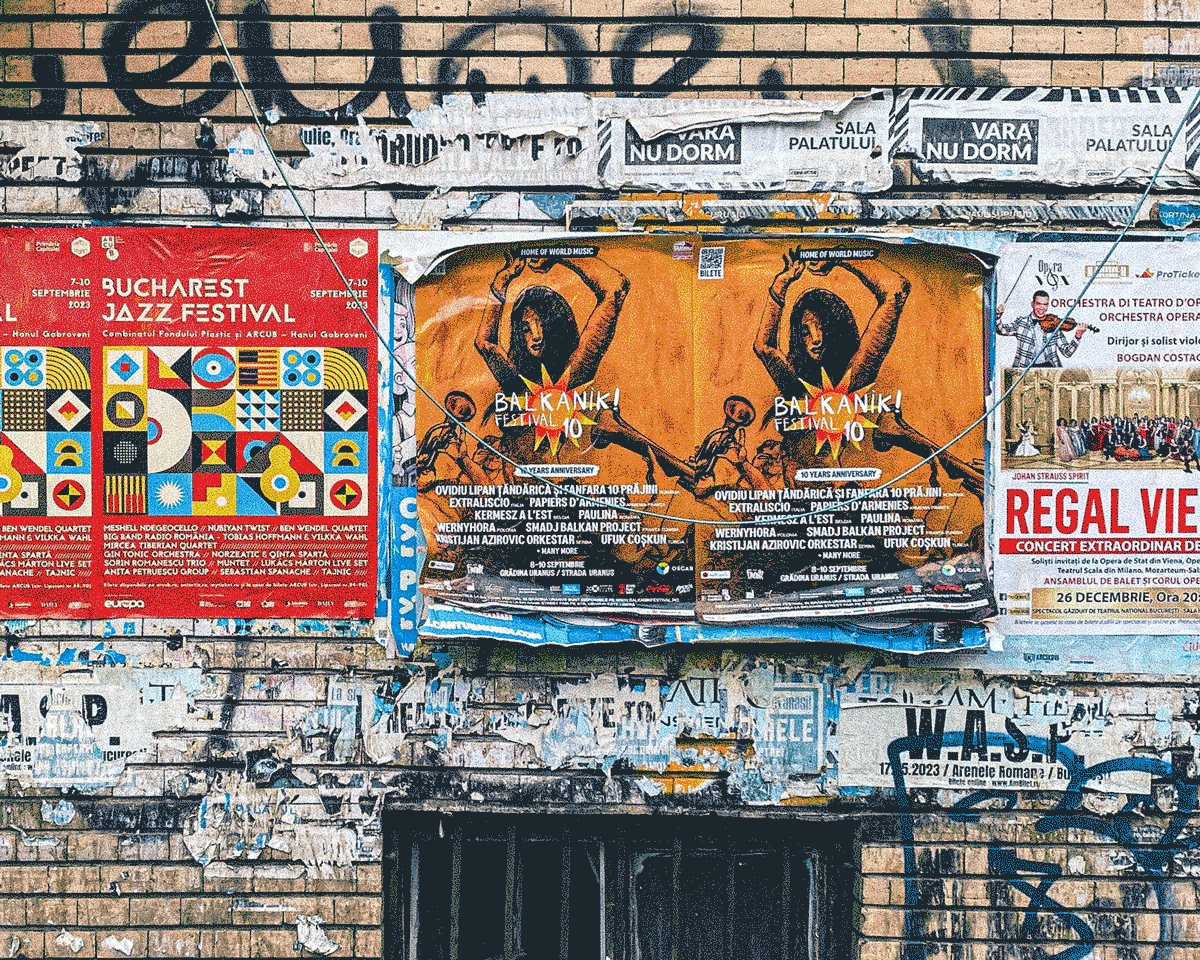
Grosu runs Local Design Circle, an initiative organising projects, events and exhibitions in Romania. Pictured here is the ‘Posterjam’ exhibition at Romanian Design Week, 2020.
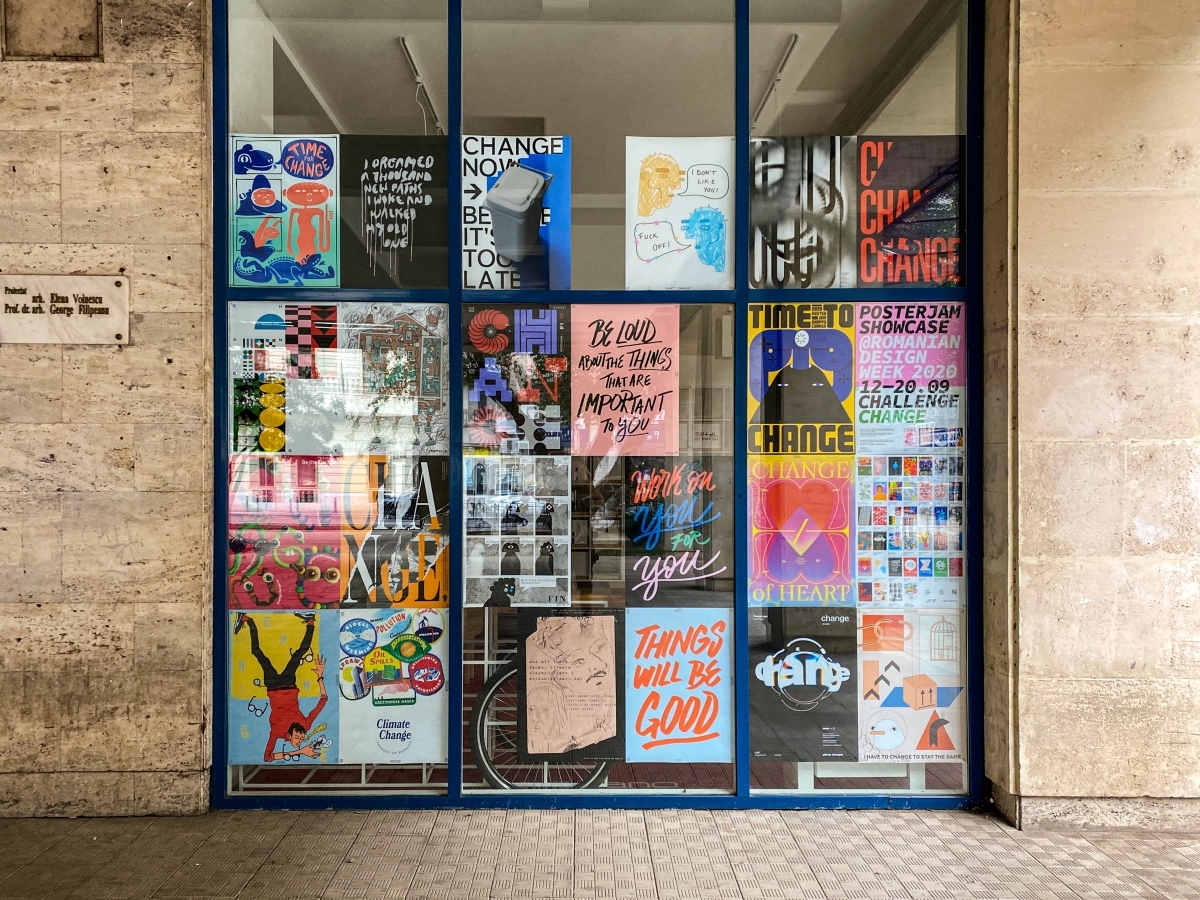
Another recurring theme was multi-script typography, particularly with numerous countries using both Latin and Cyrillic lettering. It was exemplified by projects such as the Balkan Type System by Nikola Djurek and Marija Yuza; contemporary Ukrainian typefaces by Dmytro Rastvortsev; and by the Romanian archaic style, which includes bastard letters from when Romania went from Cyrillic to Roman at the turn of the twentieth century. A fascinating account of Turkey’s transition from Arabic to Latin letters in 1920s was given by Onur Yazıcıgil (a researcher, lecturer and organiser of the ISType conference in Istanbul). He presented numerous design artefacts from that era, pointing out that public opinion was at the forefront of this transformation, with magazines asking their readers which typeface they should choose for their new masthead.
The shift from Arabic to Latin script shown in the Cumhûriyet newspaper, from the FEED presentation by Onur Yazıcıgil.
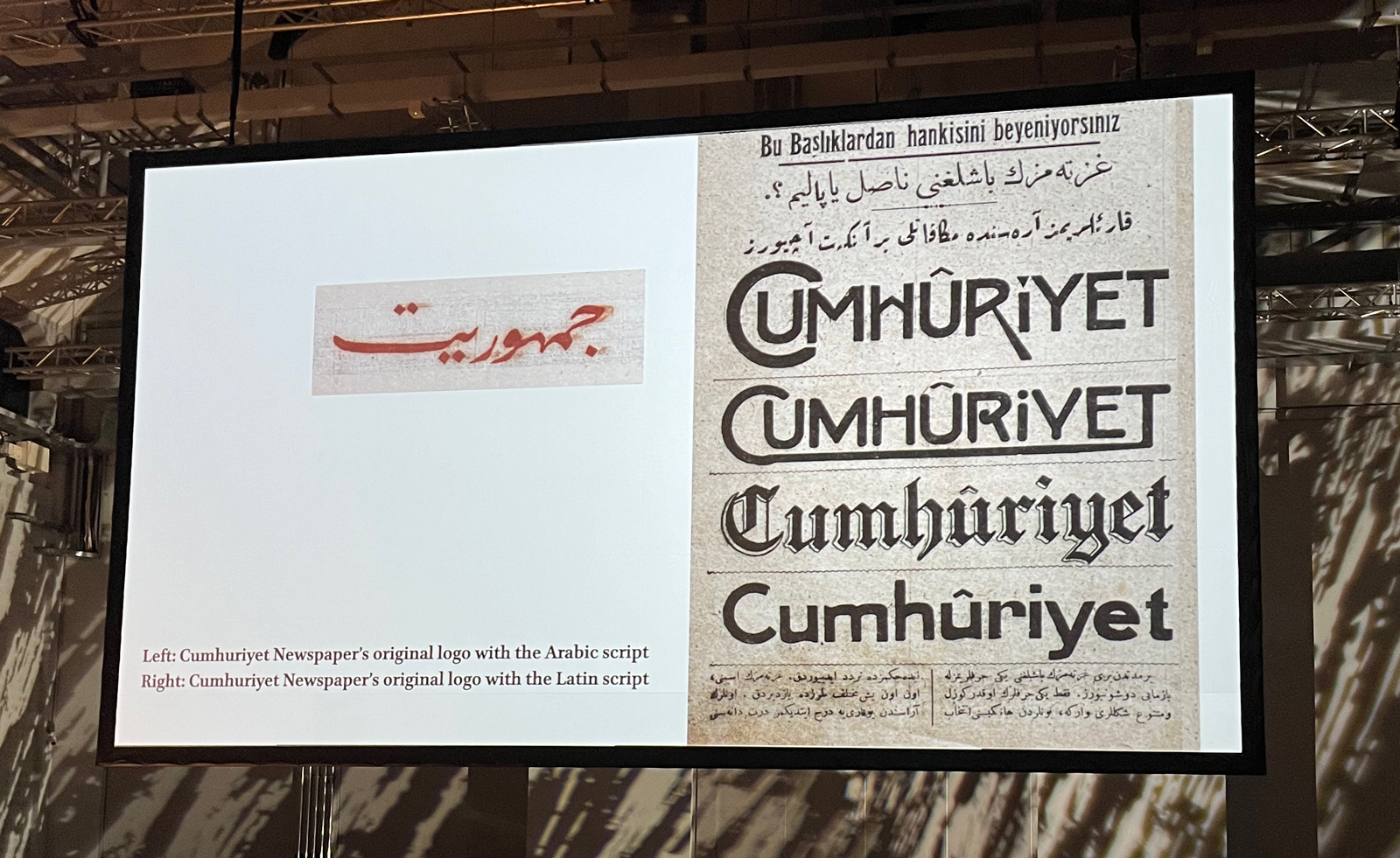
Balkan Type System designed by Nikola Djurek and Marija Yuza.
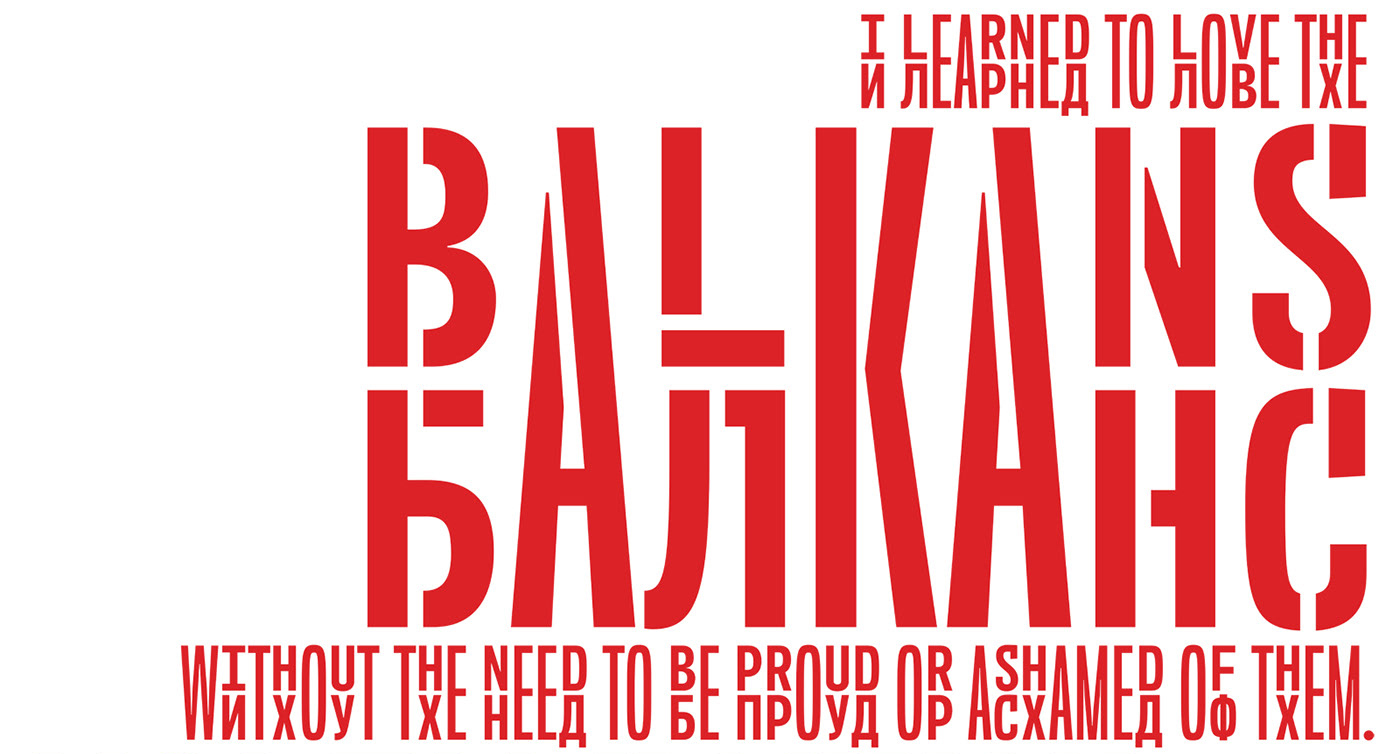
Several speakers mentioned international design competitions as a measure of success and a source of national pride, which suggested a desire for recognition and ultimately more opportunities for creative communities. There were also numerous common issues to discuss. No public funding; lack of graphic design institutions; and poor access to design education were some of the recurring problems listed. As a result, even established and well regarded initiatives struggle, or shut down, like Brno Biennial (see ‘Graphics and the uncanny’ on the Eye blog). Despite a petition and numerous conversations with decision-makers, public funding for the popular Brno event – launched in 1962 – was recently withdrawn.
Filip Blažek presents ‘Identita’, a new project on Czech graphic design.
Photo by Patryk Wiśniewski.
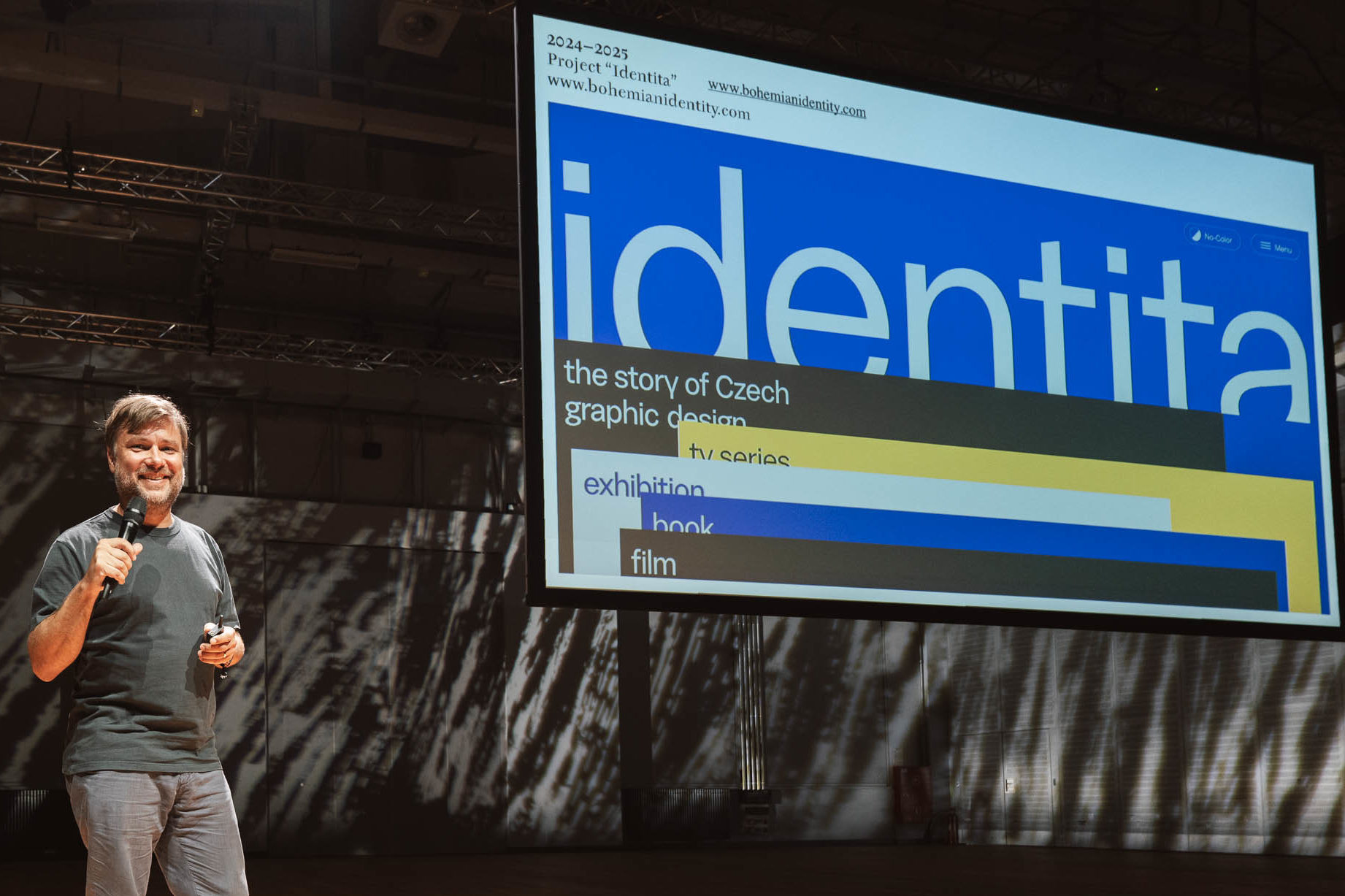
Brand strategist Péter Serfőző used book sales to identify the distribution of graphic designers across Hungary.
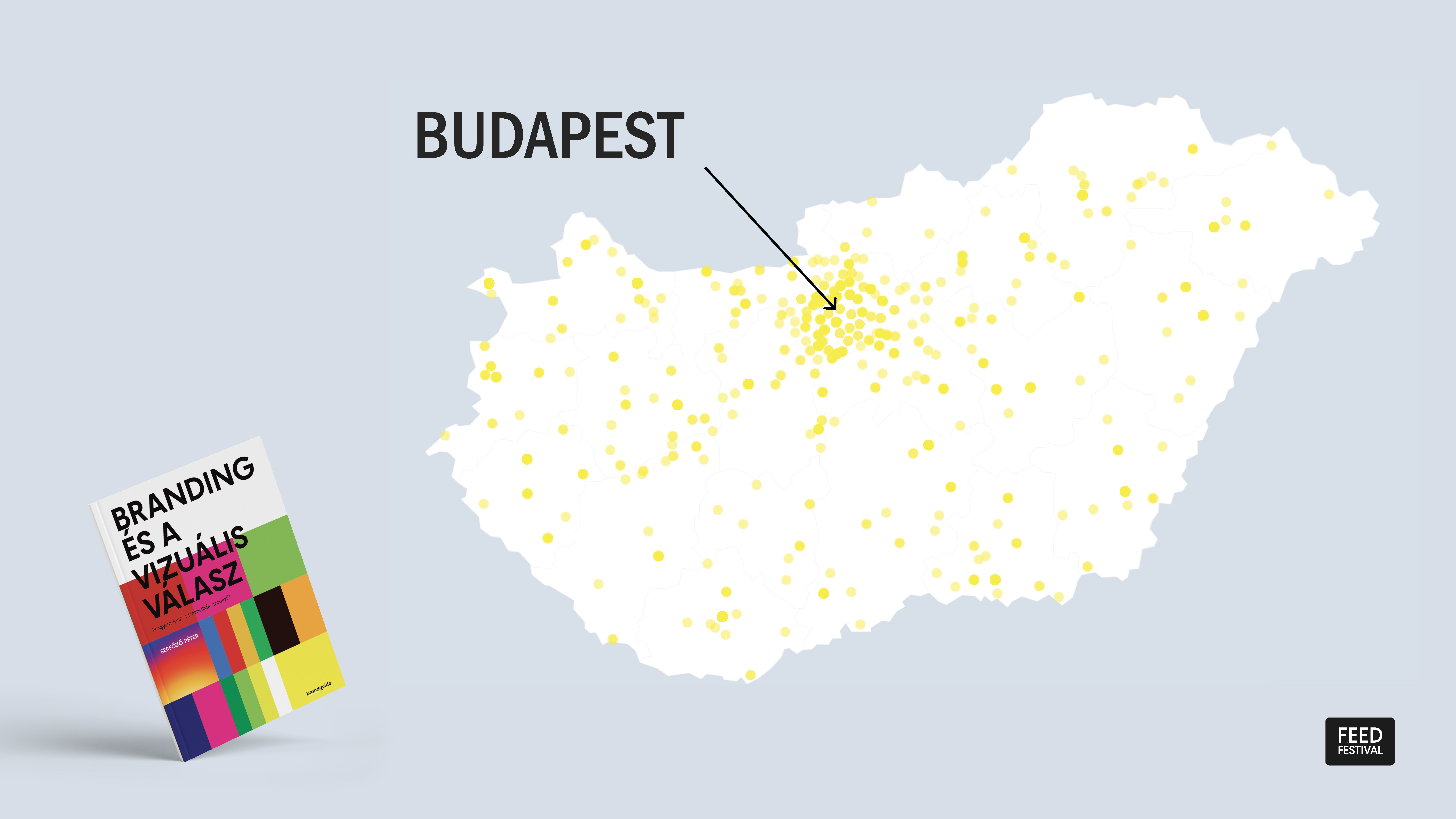
Ukrainian voices had a strong presence. Illustrators and founders of Pictoric, Anna Sarvira and Oleg Gryshchenko, spoke of folk motifs and avant-garde influences shaping the national visual style, as well as the efforts of bringing illustration to public spaces which until recently was very uncommon. Sasha Tregub, the publisher of Telegraf (see ‘Resistance is essential’ in Eye 104) presented fascinating accounts of designers taking charge of their national design heritage. One of them was a protest against Kyiv’s visual identity unveiled by the city in 2011. The design community responded with a chestnut leaf symbol, free for anyone to use, which became an ‘unofficial’ yet publicly accepted logo of Kyiv. Tregub explained that this inherent need to self-organise comes from ‘volia’, the Ukrainian spirit characterised by the will and courage to live and persevere. He also said that despite the war, much of life in many cities is relatively back to normal. When asked how the wider community can support Ukrainian design, the answer was direct: hire Ukrainian designers, illustrators and studios who rely on projects from abroad; their domestic market has little to offer at present.
‘When Everything Matters’, an exhibition of illustration organised by Pictoric at Book Arsenal Festival in Kyiv, 2023.

Sasha Tregub presenting typographic details from Ukrainian hryvnia, which inspired type design for branding of the Ministry of Digital Transformation of Ukraine. Photo by Patryk Wiśniewski.
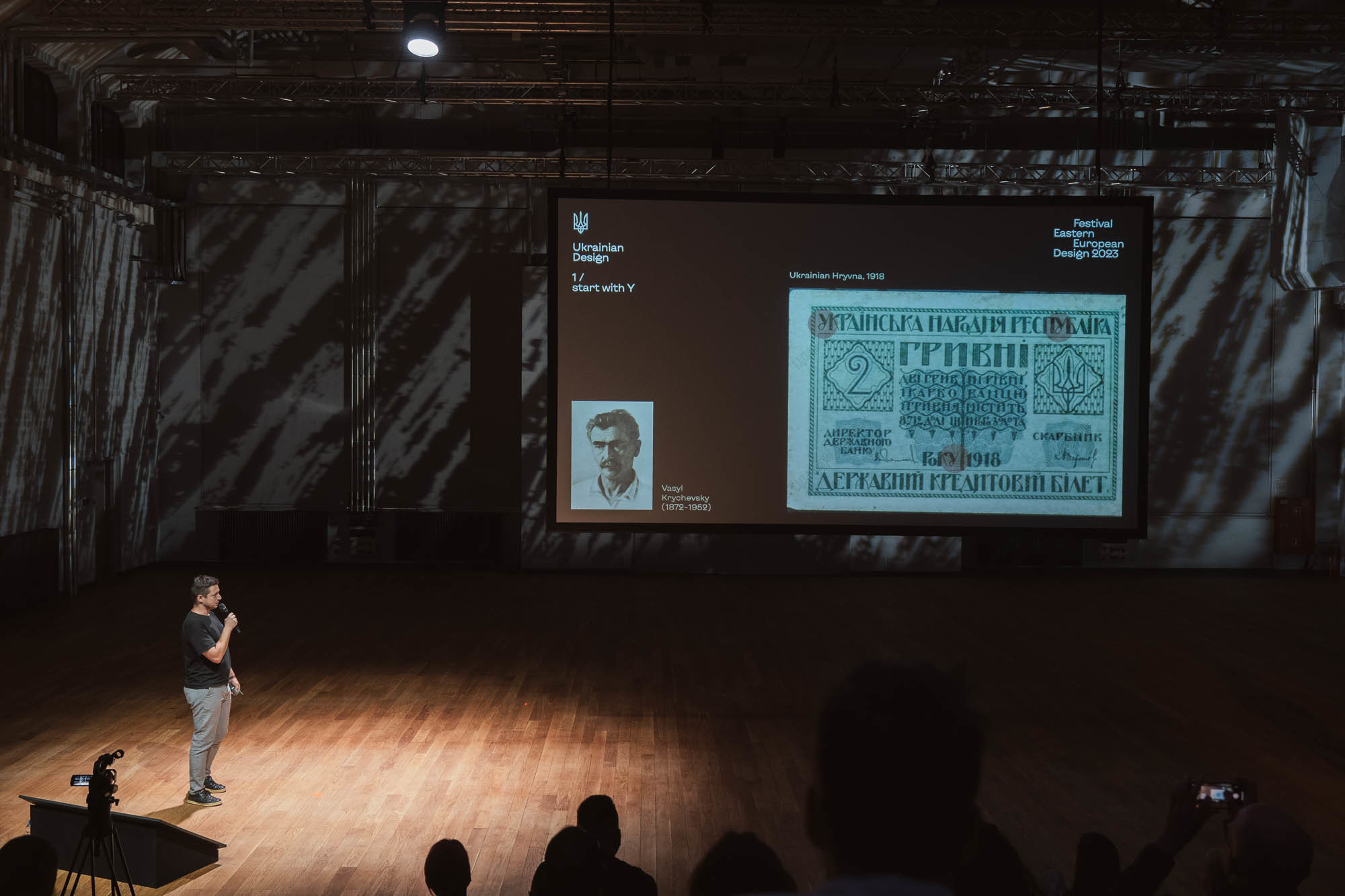
Festival Eastern European Design in Warsaw was the first embodiment of what will become an annual event, with subsequent editions planned in Vilnius (2024) and Kyiv (2025). The wealth of knowledge, visual history and design innovation presented in the conference pointed out the West’s ignorance of these under-represented communities. It provided a rare panorama of the transformation undergone in recent history, which is uncommon in times when many conferences rely upon international ‘superstars’ to sell tickets. FEED is a prime example of the importance of participating in such events. It’s through sharing and connecting with others that communities are made.
Gabriela Matuszyk designer, writer, editor, London
--
More on the assembly of graphic design event organisers, which took place 3-4 of September, will be published on Eye blog soon.
--
Eye is the world’s most beautiful and collectable graphic design journal, published for professional designers, students and anyone interested in critical, informed writing about graphic design and visual culture. It is available from all good design bookshops and online at the Eye shop, where you can buy subscriptions and single issues.
